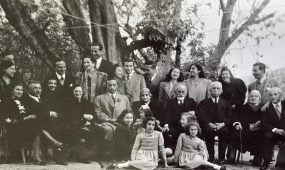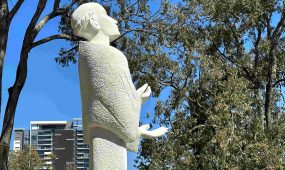Movement for the Ordination of Women: history, origins and key figures
People & History
“The driving force behind the Movement for the Ordination of Women in Australia was Dr Patricia Brennan…As a woman and a lay person, Patricia was not permitted to preach during a visit to Brisbane. The then–Dean got around this restriction by concluding Evensong with a lengthy procession around the Cathedral, after which Patricia entered the pulpit and spoke,” says The Rev’d Canon Dr Marian Free
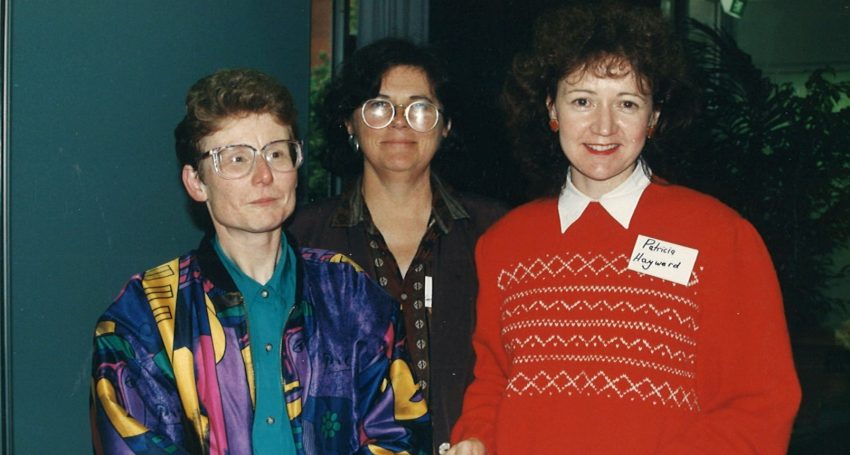
Nearly 40 years ago a group of 22 Brisbane women and men gathered on retreat with English journalist and writer Monica Furlong. Monica had been invited to Australia by Dr Patricia Brennan, the founder of the Movement for the Ordination of Women (MOW) in Australia. Gwenneth Roberts, who had met Sydney-based Patricia, organised Monica’s 1984 trip to Brisbane (the Sydney branch began in 1983). It was an extraordinary weekend because those who supported women’s ordination met for the first time and shared their hopes and dreams.
It was a heady period, matched by some of the movements in the wider community. Inclusive language meant that many of us were hearing ourselves addressed in church for the first time and feminist theology meant that we heard our stories in the Biblical stories.

Dr Patricia Brennan
The driving force behind the Movement for the Ordination of Women in Australia was Dr Patricia Brennan, an extraordinary woman whose work in the mission field sadly gave her no credibility when she returned to her church. As a woman and a lay person, Patricia was not permitted to preach during a visit to Brisbane. The then-Dean got around this restriction by concluding Evensong with a lengthy procession around the Cathedral, after which Patricia entered the pulpit and spoke.
Advertisement
Although she discerned that she did not have a vocation to ordained ministry, Patricia’s experience made her keenly aware of the way in which the Church restricted the ministry of at least half its members. Patricia formed a Sydney branch of MOW, an organisation that began in the UK in 1979 under Bishop Stanley Booth-Clibborn.
During the retreat, led by Monica Furlong, many of us shared for the first time about our sense of vocation and heard, for the first time, ourselves in the inclusive language of the hymns that we sang. All of us shared our frustration with the limited roles available to women in the Church.

Dr Gwenneth Roberts in 1990
A meeting between Dr Gwenneth Roberts and Patricia formed the impetus for a Brisbane branch. At a subsequent meeting of those who attended the retreat, MOW Brisbane was formed and Gwenneth and myself were appointed as joint coordinators.
The group tried in both traditional and creative ways to change the hearts and minds of our Diocese’s leadership. We did this though encouraging supporters to stand as Synod representatives, through “protests” (rather, a silent presence) at ordinations, public debates with those who held a different view, and motions at Synod. Prior to the1987 General Synod in Sydney, every Synod representative was presented with a document outlining the arguments for the ordination of women.
Advertisement
Through the national organisation we sponsored the visits of The Rev’d Alison Cheek, one of the Philadelphia Eleven (the first women to be ordained to the priesthood in the Episcopal Church), whose 50th. anniversary of ordination occurs next year, and The Rev’d Helen Havens, from Houston, Texas. Witnessing my five-year-old daughter being blessed by Alison was almost overwhelming.
We wrote and shared creative liturgies, sponsored national conferences and generally provided encouragement and support to one another through the good times and the bad. Among the former was the celebration of Heather Toon’s ordination to the diaconate in 1988 — she was the first woman to be ordained in our Diocese. Among the latter, one of the worst times was the audible vote during a Diocesan Synod. The stridency of the “no” supporters, especially that of some younger Synod members, was distressing, although the upside was that we unequivocally knew who supported us and who did not!
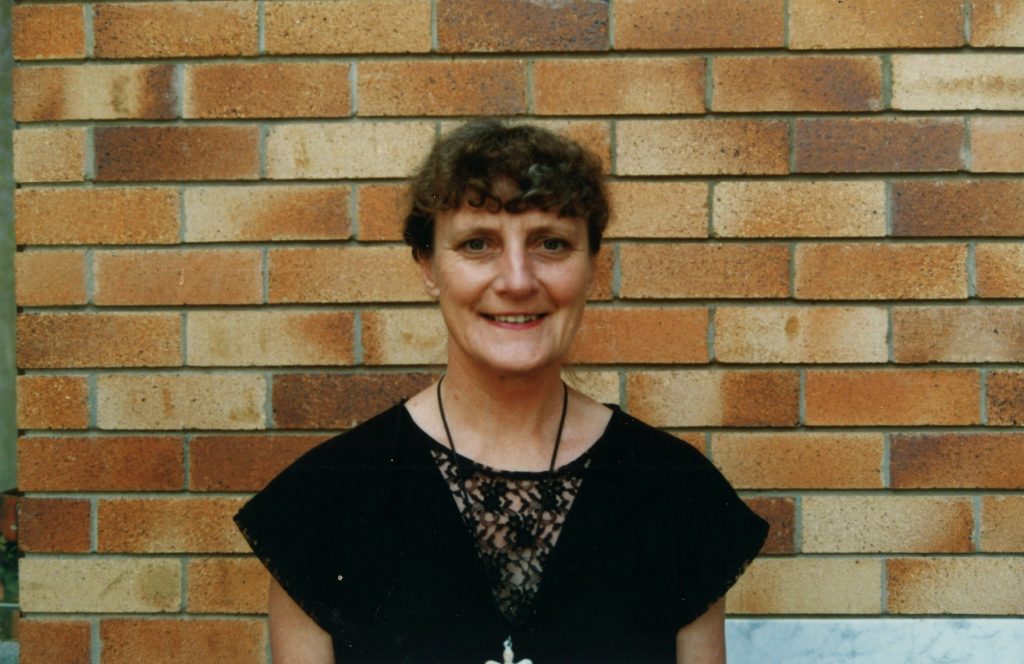
Dell Foreman at St Francis College in 1988
Of those early women members, Dell Forman, Debra Hay, Cecilie Landers and I went on to be ordained and others contributed to the Church in significant ways. Gwenneth Roberts is continuing to advocate for the protection of women and children from domestic and family violence; the late Mavis Rose was a fearless campaigner and author; and, Alison Cotes’ contacts with the wider Church and journalism experience continued to be invaluable.
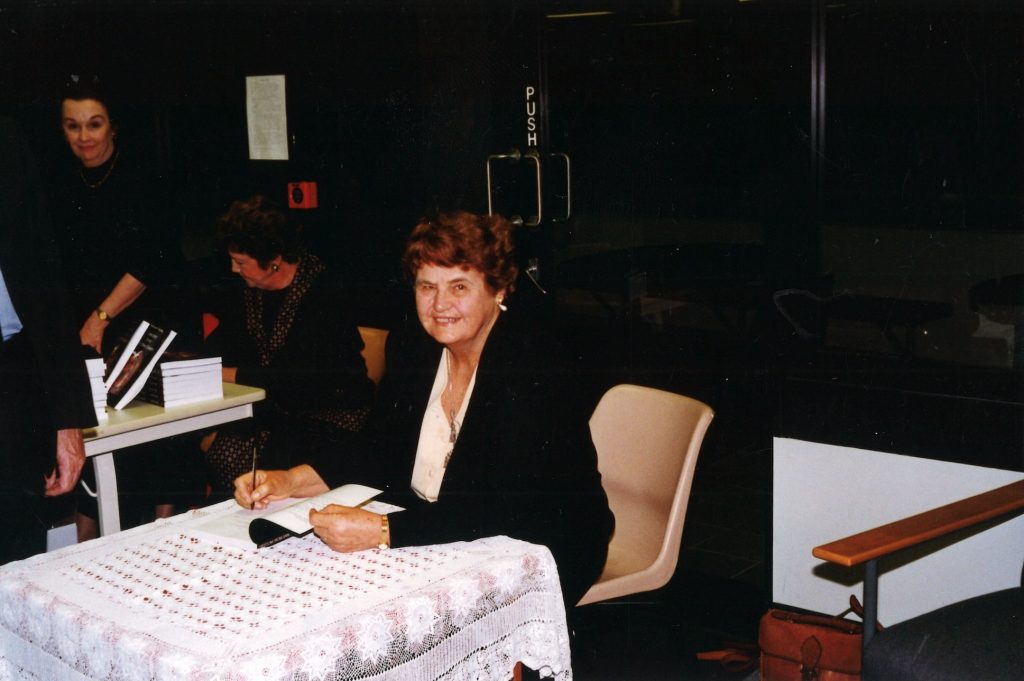
Mavis Rose in 1996
Sadly we are now in a time when some of these resilient and dedicated pioneers have left this earth, taking with them a wealth of experience and memory. We are grateful for their energy, creativity and inspiration.
MOW Brisbane disbanded in 1997, while the Sydney branch continued as MOWatch. MOWatch recently celebrated 40 years of MOW, with Archbishop Kay Goldsworthy AO as guest.
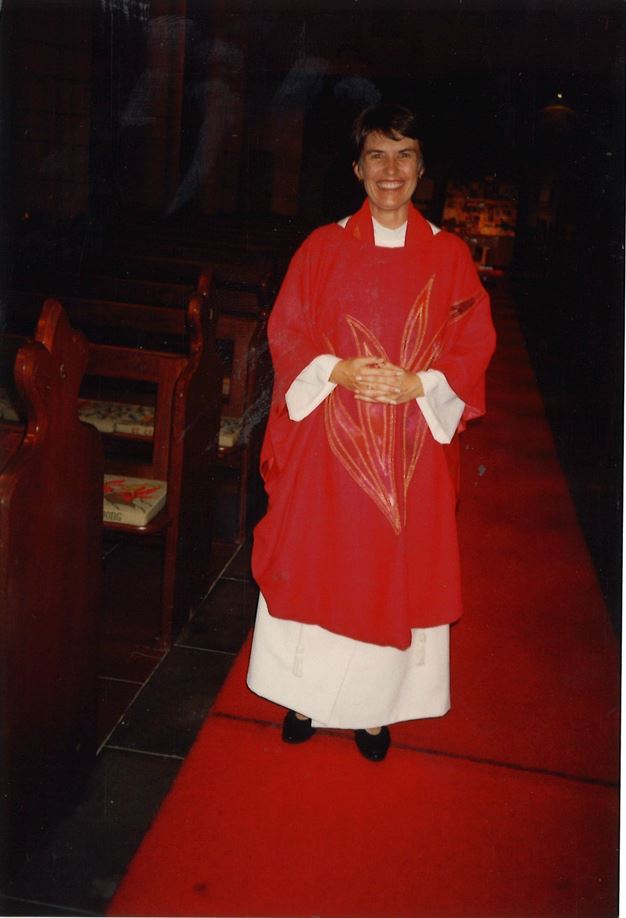
The Rev’d Dr Canon Marian Free in St John’s Cathedral on the day of her ordination to the priesthood in February 1995
While this reflection focuses on some of the women at that first retreat, as we celebrate the 30th anniversary of the ordination of women as priests in our Diocese, I find myself remembering all the extraordinary women with whom I had the privilege to work alongside as a member of the MOW. Our faith, friendship and common goal sustained us.
Dozens of women have now been ordained to the priesthood in our Diocese. I honour them for their service and dedication to our Church, along with those who campaigned for their right to be ordained.
Author’s note: The Movement for the Ordination of Women (MOW) Australia continues a national presence. Four Anglican Church Southern Queensland women serve on the board, including The Rev’d Dr Ann Edwards (vice president), The Rev’d Sandra Kjellgren (secretary) The Rev’d Melissa Conway (member) and Tanja Hagedorn (member). A national MOW conference will be held in November 2024. Find out more about MOW by visiting the National MOW website and following MOW Australia on Facebook. To get involved with MOW, please contact The Rev’d Dr Ann Edwards and The Rev’d Sandra Kjellgren via Secretary@mowatch.com.au
Editor’s note: If you have a MOW story to share, please contact the anglican focus team via focus@anglicanchurchsq.org.au, so we can provide more information about what is needed in the way of text and images.

